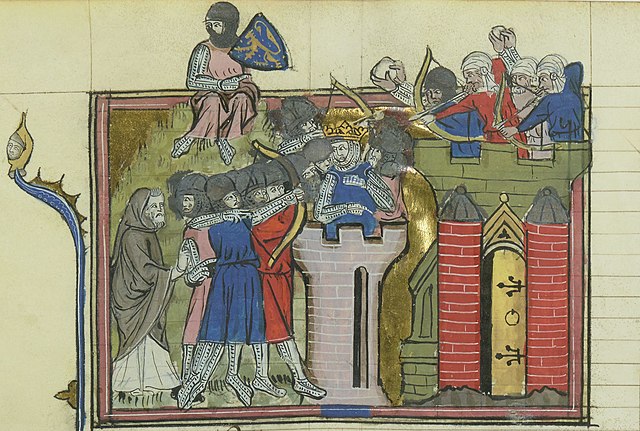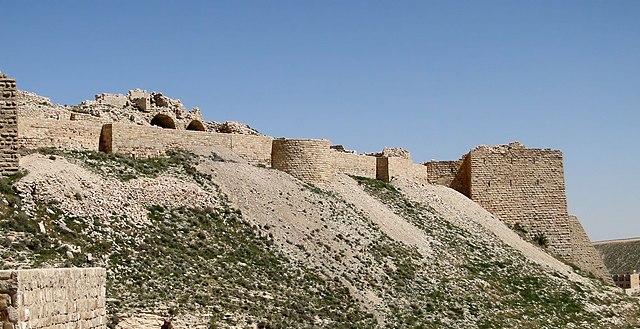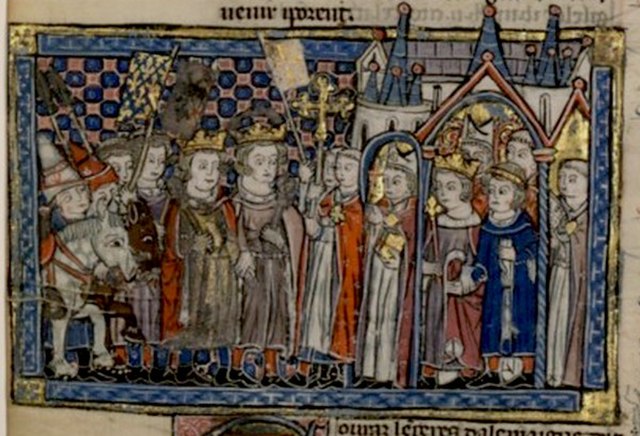The Third Crusade (1189–1192) was an attempt led by three European monarchs of Western Christianity to reconquer the Holy Land following the capture of Jerusalem by the Ayyubid sultan Saladin in 1187. For this reason, the Third Crusade is also known as the Kings' Crusade.
Battle scene, in Varka and Golshah, mid-13th century Seljuk Anatolia.
Philip II depicted arriving in Palestine, 1332–1350
Saladin's troops, French manuscript, 1337
The Crusader states, or Outremer, were four Catholic polities that existed in the Levant from 1098 to 1291. Following the principles of feudalism, the foundation for these polities was laid by the First Crusade, which was proclaimed by the Latin Church in 1095 in order to reclaim the Holy Land after it was lost to the 7th-century Muslim conquest. Situated on the Eastern Mediterranean, the four states were, in order from north to south: the County of Edessa (1098–1150), the Principality of Antioch (1098–1268), the County of Tripoli (1102–1289), and the Kingdom of Jerusalem (1099–1291). The three northern states covered an area in what is now southeastern Turkey, northwestern Syria, and northern Lebanon; and the Kingdom of Jerusalem, the southernmost and most prominent state, covered an area in what is now Israel, Palestine, southern Lebanon, and western Jordan. The description "Crusader states" can be misleading, as from 1130 onwards, very few people among the Franks were Crusaders. Medieval and modern writers use the term "Outremer" as a synonym, derived from the French word for overseas.

The Church of the Holy Sepulchre, one of the holiest shrines of Christendom, in Jerusalem.
Godfrey of Bouillon during the siege of Jerusalem (from the 14th-century Roman de Godefroi de Bouillon)
Montréal castle
Kings Louis VIII and Conrad III meet Queen Melisende and King Baldwin III at Acre from a 13th-century codex







